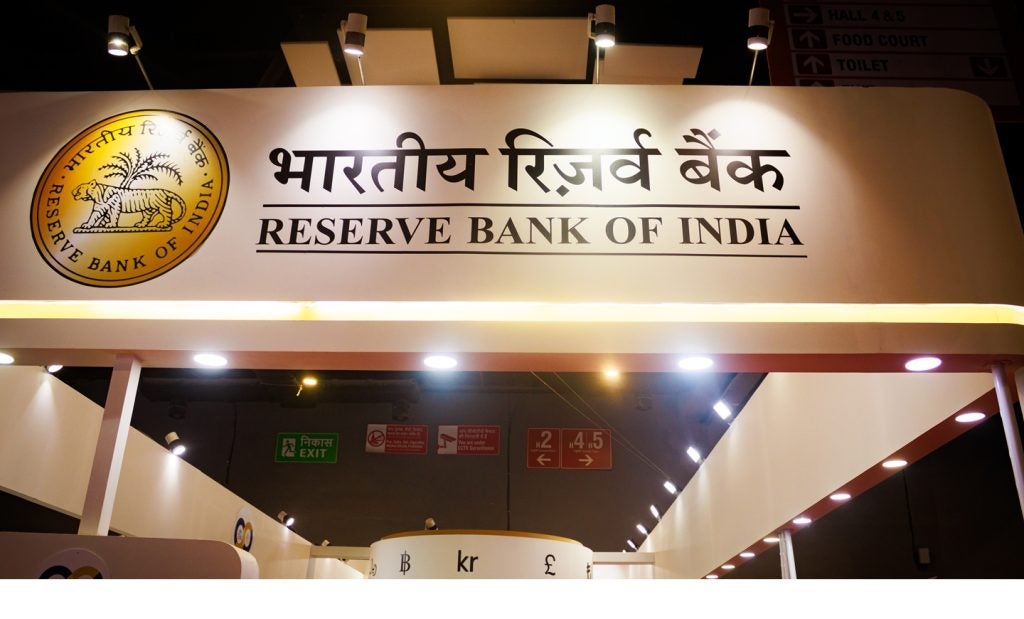Mongolia’s retail banking sector has
captured headlines around the world by successfully targeting
low-income segments of the market through a number of microfinance
initiatives. Bold Magvan, chief executive of XacBank, tells
Farah Halime the bank plans
to reach the rural population via its fast-growing direct banking
channels.
 XacBank, the fourth-largest bank in Mongolia by
XacBank, the fourth-largest bank in Mongolia by
deposits, will grow its retail banking market share by ramping up
its m-banking and accessible microfinance business model to target
the country’s rural population.
A relative newcomer to the retail banking
sector following a merger of non-bank financial institutions in
2001, XacBank has transformed itself into a community bank and
microfinance institution catering to Mongolia’s low-income
population.
The bank’s strategy has already paid off, with
an increase in retail lending market share of 7 percent in fiscal
2009, up from 5 percent a year earlier. Bold Magvan, chief
executive of XacBank, told RBI the bank plans to grow this
further in 2010 by targeting small and medium-sized businesses to
augment its micro-loans products portfolio.
The bank has used mobile-banking and
microfinance channels to overcome the challenge of Mongolia being
one of the least densely populated countries in the world. There is
only a population of around 2.9 million people and 630,000
households in an area of around 1.5 million sq km.

US Tariffs are shifting - will you react or anticipate?
Don’t let policy changes catch you off guard. Stay proactive with real-time data and expert analysis.
By GlobalDataXacBank’s 75 branches operate in tandem with
its Amar – which translates as ‘Easy’ – mobile banking system
launched in July 2009, by connecting customers to the bank’s core
banking system, via a short message service (SMS). The bank, which
has used Oracle’s Flexcube as its core banking system since June
2008, allows customers to withdraw and deposit money at any of
XacBank’s far-flung branches by way of text message.
Magvan said the bank was refining the service
so that some of the authentication processes involved to minimise
risks associated with SMS banking were made more user-friendly.
Uptake of the service, accessible to 1.5
million mobile phone users, has been rapid with m-banking user
numbers more than doubling from 11,200 in September 2009 to 26,810
by the end of January.
Magvan said almost 75 percent of the total
number of customers registered for the service reside outside the
country’s capital, Ulaanbaatar.
“Considering the small population of the
country and number of financial institutions in Mongolia – 14
commercial banks and around 200 non-bank financial institutions –
the number of registered clients is increasing fast. We actually
slowed down because of too much demand,” he said.
Reaching the rural masses
 The bank has successfully driven expansion of a
The bank has successfully driven expansion of a
mobile branch service with a fleet of vans and has also grown its
agency operation.
Magvan described the 2,000 agents (a doubling
from 1,000 from the end of September 2009) operating around
Mongolia as “small cash-corners for our banks”.
Tapping into local resources such as the owner
of a grocery store, petrol station manager or post office employee,
the bank is able to expand its rural customer service.
“All these people will represent us in very
remote areas helping us to dispense cash and receive deposits. So
the customer comes to the grocery store owner, asks to deposit $10
and the cashier will complete the transaction by mobile phone,” he
said.
For Magvan, this is the unique feature of the
free service.
“We don’t have to establish our physical
branches in villages because it’s expensive. So instead of that we
employ existing networks, like grocery store networks. That is the
branchless banking concept,” he said.
Not only does this provide an incentive for
local Mongolian shopkeepers, but it has boosted the bank’s
deposits, which rose by 62 percent during fiscal 2009 to MNT114.7
billion ($78.6 million) at the end of December.
In 2008, the bank saw its total assets reach
MNT238 billion, up 41.5 percent from the year before. By the end of
the third quarter of fiscal 2009, they had grown to MNT320
billion.
Technology a key to
success
 XacBank has also achieved success in growing its
XacBank has also achieved success in growing its
existing direct channels, including internet and telephone banking.
Tapping into a relatively new technology in this emerging market
has been the key to the bank’s success in reaching its targeted
market and meeting each customer’s specific needs.
“Our clients now don’t need to travel more
than 100 kilometres just to transfer some money to their children
who are studying in Ulaanbaatar. Instead, they use their cell phone
to access their account,” Magvan said.
“It’s a tremendous cost and time-saving for
the customer who doesn’t have to drive a horse or camel to the
branch. By doing this, we are creating a transfer ecosystem.”
The market segment the bank has targeted has
been overlooked by most banks as not economically viable, but
Magvan said XacBank boasts one of the lowest ratios for
non-performing loans in the country – accounting for 2 percent out
of the sector total.
“The spirit of microfinance business is to
target underprivileged segments of the population living in remote
areas. These clients usually possess weak economic grounds and are
often excluded from widely available modern financial services,” he
said.
Although total non-performing loans almost
doubled between the first and fourth quarters of 2009 from MNT2.48
billion to MNT4.51 billion, Magvan said that “in terms of quality
of loans, we are number one”.
It makes the majority of micro-loans and
savings accounts available to small business, low-income and
marginalised groups. The bank is also flexible in accepting
different kinds of collateral as pledges for loans, including the
gers, or tents, in which many Mongolian nomads live.
The bank has seen a steady rise in its loan
portfolio with MNT 173.7 billion in loans in 2008, up 33 percent
from a year earlier.
XacBank is unconventional in the banking
sector because its ongoing target to grow market share is driving
the fight against poverty through making financial services
accessible to lower-income clients.
Magvan reiterated the bank’s “mission” to put
a “significant emphasis on social responsibility” by valuing
ethical conduct and transparency.
“We are socially orientated, and have been
from the beginning, serving the low-income population and remote
areas in Mongolia, including herders, the youth of Mongolia,
children, students and women. They compose the majority of our
clients,” he said.
Challenges ahead
 Magvan admits the bank faces challenges in the coming
Magvan admits the bank faces challenges in the coming
year. By definition, “distributing small tiny loans to thousands of
people is much more expensive than corporate banking”.
Although XacBank has successfully grown its
market share and financial position during the financial crisis, it
still needs to overcome the challenge of its higher operating cost
ratio.
“Being a microfinance institution, we face the
classic challenge that every microfinance institution faces,”
Magvan said.
Reducing costs will drive the bank to invest
and introduce IT technology by providing financial services instead
of traditional branch banking channels.
The strategy to move towards the microfinance
business model, m-banking and online banking is reaping dividends
for the bank. By the end of December 2009, Magvan said, the bank
had granted 85,000 micro-loans.
“This is not a small number if you take into
account the number of Mongolian households – it is over 10 percent
of households in the country,” Magvan added.
Growing competition among the major Mongolian
banks is another challenge XacBank faces.
“Given the current level of funding surplus,
banks will have lowered their interest rates and adjusted other
financial metrics to attract more borrowers,” he said.
While Mongolia is considered overbanked given
the number of banks in relation to its population, Magvan is
optimistic and believes there is great scope to target the unbanked
segment.
“There are many who don’t have loans, but that
doesn’t mean they don’t have access to them. By developing
branchless banking services, we can reach out to unbanked
customers,” he said.
He added that the Mongolian banking sector,
like much of the rest of the world, is “on the road to recovery
after the prolonged turbulence of the liquidity crunch, business
failures and a reduction in public trust in the banking
sector”.
XacBank’s commitment to providing sustainable
financial services to Mongolians has also attracted investment from
Western Europe and the US.
“We have support from all our over the world.
The bank has been profitable from the beginning. Roughly 50 percent
of our funding comes from abroad from over 20 countries, including
the Benelux countries, Switzerland, Germany and the US,” Magvan
said.
The bank is also positioned to look at
supporting neighbours China, Russia and Kurdistan with investment
and technological output. Although the bank is still refining its
strategy, Magvan is upbeat about the scope for a growing global
phenomenon of East to East investment; a move away from common West
to East investment.
A number of products were launched in 2008
within quick succession of each other, including ATMs for XacBank’s
cardholders, a cashback service allowing customers to withdraw cash
from card merchants or post offices rather than visiting an ATM,
and the start of a nomadic banking service so customers can use
banking services regardless of remote locations.
Customers can access the service via the
internet or a mobile phone or landline using the Mobicom
network.







